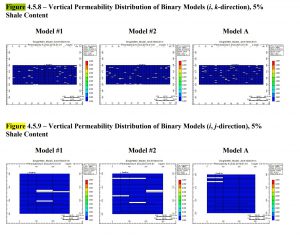Application of Dynamic Upscaling for Thermal Reservoir Simulation
本文旨在分析网格尺寸定义、油藏非均质性的位置和数量对基于模拟的采油过程性能的影响。通过分析两组不同模型(二元和相基模型),开发并应用了一种新方法来减少预测结果中观察到的差异。研究表明,与仅定义非均质性的尺度相比,近井筒油藏非均质性的增加,如网格块连通性的降低,对模拟结果的影响更大。此外,当关注油藏模型内的连通性时,尺度的影响可以被标准化。
CMG软件应用情况:
在本研究中,主要使用了Computer Modelling Group(CMG)的油藏模拟软件,包括Builder(用于创建油藏模型)和STARS(用于模拟热采过程)。CMG的软件在油藏模拟中被广泛使用,特别是在蒸汽辅助重力泄油(SAGD)过程中。研究中还使用了CMOST工具,这是一个计算机辅助历史拟合、优化、敏感性分析和不确定性评估工具,用于自动执行模拟运行并分析数据,以实现最佳解决方案集。
作者单位:
加拿大阿尔伯塔省卡尔加里大学,化学与石油工程系
Abstract
Reservoir simulation is inherently an imperfect tool for forecasting. However, given sufficient analysis and post-processing, the areas of uncertainty can be quantified and effort can be made to mitigate their impact and improve the confidence in the prediction. The focus of the research documented here is to analyze the extent to which grid size definition and the location and quantity of reservoir heterogeneities impact the performance of a simulation-based recovery process. In analysing two different sets of models (binary and facies-based), a new methodology was developed and applied to mitigate the observed difference in the forecasted result. When the observations are coupled, it suggests that an increase in near wellbore reservoir heterogeneity, as indicated by a reduction in gridblock connectivity, has an increased impact upon the simulation results when compared to the impact of strictly length scale definition of heterogeneity. Additionally, the impact of length scales can be normalized when the focus is upon connectivity within the reservoir model.


